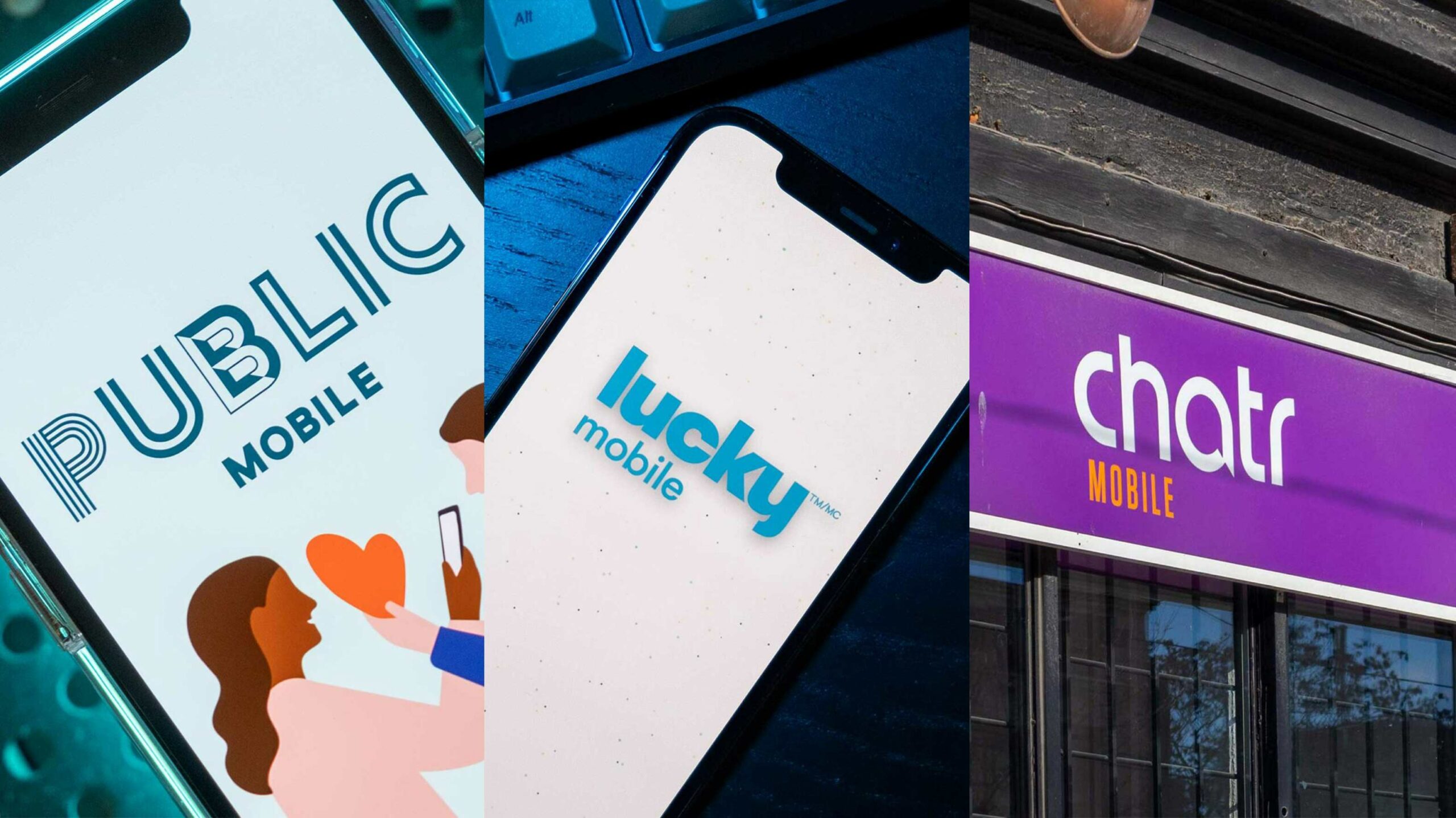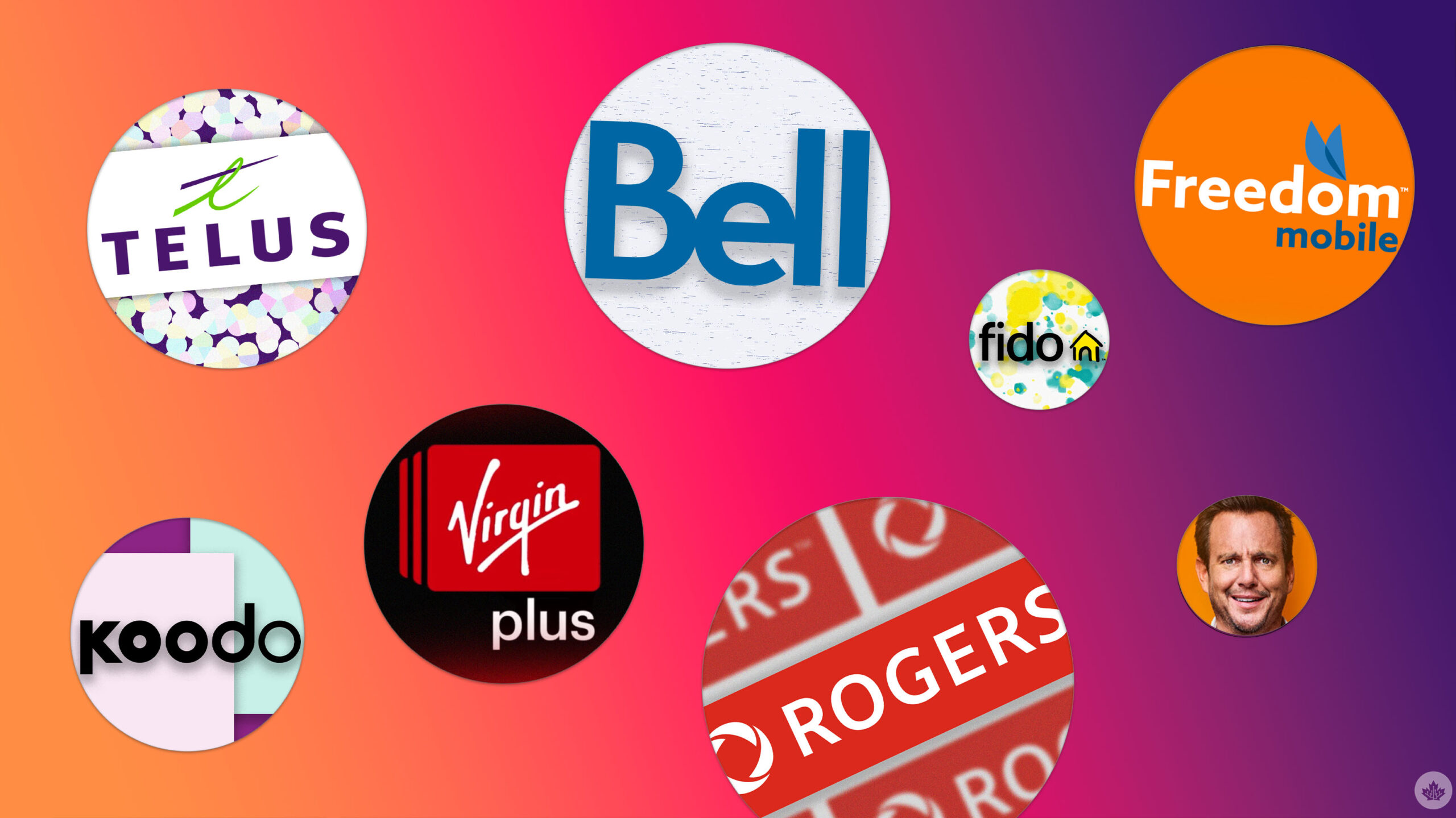Understanding the differences between Canadian wireless providers
Most Canadians know the Big Three carriers — Rogers, Bell and Telus.
But for those who only think about their carrier when its time for a phone upgrade (or those who aren’t avid MobileSyrup readers), it might come as a surprise to know that most wireless service providers in Canada are owned by the Big Three. Even if you know that, figuring out the differences between, say, Rogers, Fido, and Chatr can be tough.
So here’s everything you need to know about the differences between Canada’s wireless providers, though this isn’t an exhaustive list of every provider operating in Canada (it’s also worth noting many of these brands offer other services, like internet or cable TV, but we’re going to focus on wireless).
National providers
First up, the national providers. These are your Big Three, Rogers Bell and Telus. If you have cell service in Canada, you’re probably using one of these three or a provider owned by one of these three. Unless you want to dig into the technical nitty-gritty, there isn’t a lot that’s different between the Big Three carriers and, in all the ways that matter to most Canadians (like price), they’re effectively the same.
What makes the national providers stand apart from the others on this list is that they offer 5G services (most of the others cap out at 4G or 3G), service bundles (such as family discounts if you have multiple lines, or discounts if you have multiple services with one provider), and they’re also the most expensive.
Here are some of the things you can get with the Big Three that might not be at other providers:
- Plans starting around $85/mo and up
- 5G/5G+
- “Unlimited” data (what you actually get is a data cap at a set speed, and then unlimited usage throttled at a maximum speed of 512Kbps)
- Speed caps of 250Mbps to 1Gbps, depending on the plan
- Canada/U.S. plans
- Multi-line/multi-service bundles
- Streaming bonuses (Bell offers Crave with some plans, Rogers offers Disney+, and Telus has a streaming bundle, though it’s also available at Koodo)
Flanker brands
 Next up, we have the flanker brands. Chances are you’ve heard of these guys: Fido (owned by Rogers), Virgin Plus (owned by Bell) and Koodo (owned by Telus). Despite looking and acting like separate entities from the Big Three, the flanker brands are very much part of the Big Three’s strategy. Moreover, they operate on the same wireless network as what’s offered by the respective Big Three carrier — in other words, if you have poor service at home with Rogers, switching to Fido probably won’t help.
Next up, we have the flanker brands. Chances are you’ve heard of these guys: Fido (owned by Rogers), Virgin Plus (owned by Bell) and Koodo (owned by Telus). Despite looking and acting like separate entities from the Big Three, the flanker brands are very much part of the Big Three’s strategy. Moreover, they operate on the same wireless network as what’s offered by the respective Big Three carrier — in other words, if you have poor service at home with Rogers, switching to Fido probably won’t help.
The flanker brands tend to add value compared to the Big Three offerings, if you’re willing to take a hit on network performance. You might also get worse customer service with flanker brands, though your mileage may vary with that (in my experience, I’ve had better customer service from Koodo than from Telus, Bell, Rogers and Fido.)
Here are some things you’ll get with the flanker brands that you might not get from other providers:
- Plan prices ranging from $30-$70 per month
- Conventional data allotments with overage fees
- Up to 4G LTE service
- Speed caps of 100Mbps to 150Mbps (depending on provider)
- Special perks or bonuses (Koodo’s Pick Your Perk plans, Virgin’s Member Benefits, Fido Xtra)
- Refer a friend perks
- CRTC-mandated ‘Starter’ plans
It’s also worth noting that at the time of writing, Koodo was the only flanker brand that hadn’t switched over to the device financing model offered by the other flanker brands and the Big Three.
Budget brands
 There are several budget brands available in Canada as well that are owned by the Big Three. This includes Chatr (Rogers), Lucky Mobile (Bell) and Public Mobile (Telus). Like the flanker brands, the budget brands offer service on the Big Three networks but at a reduced price (and usually at a reduced quality, such as capping data speeds at a 3G level).
There are several budget brands available in Canada as well that are owned by the Big Three. This includes Chatr (Rogers), Lucky Mobile (Bell) and Public Mobile (Telus). Like the flanker brands, the budget brands offer service on the Big Three networks but at a reduced price (and usually at a reduced quality, such as capping data speeds at a 3G level).
Moreover, budget brands only offer a small number of cheap phones but focus on bring-your-own-phone service, often with no-commitment plans and no credit check. While the service can be basic, it’s often cheaper than flanker brands or the Big Three.
Here are some of the things you can get with the budget brands that might not be available at other providers:
- Plan prices ranging from $15-$70/mo
- 3G or 4G speed (depending on the provider)
- No credit check
- Monthly data bonuses
- Service credits for things like helping the community or referring a friend
Regional and other players
Finally, Canada has a variety of regional providers that are only active in certain areas of the country. Sometimes these providers also offer service that falls back on the Big Three networks if you leave their coverage region.
Regional players include providers like Freedom Mobile, Shaw Mobile, Vidéotron, Eastlink, Tbaytel, Sasktel and more. When shopping for mobile services, it’s almost always worth exploring regional options since they tend to offer lower prices than the Big Three, although service might be unreliable or restrictred outside of the regional provider’s footprint.
Most regional players offer at least 4G service, with some offering 5G as well.
For all the latest Technology News Click Here
For the latest news and updates, follow us on Google News.

